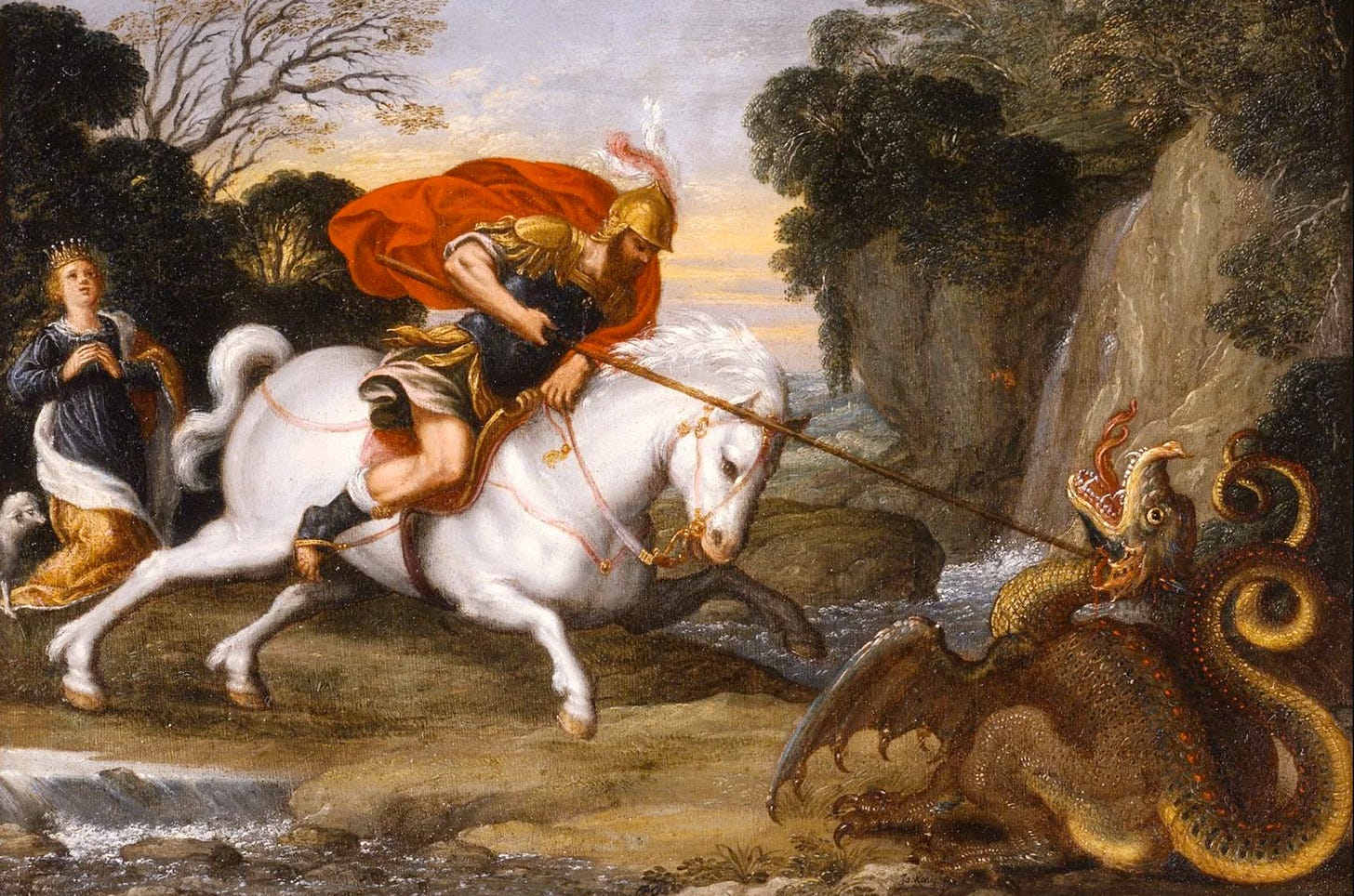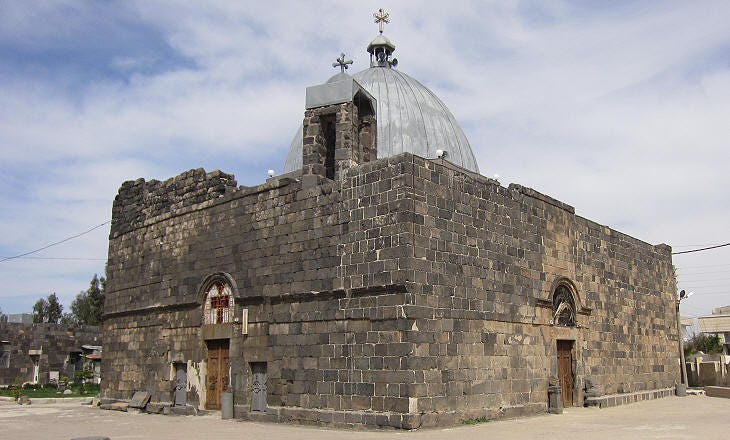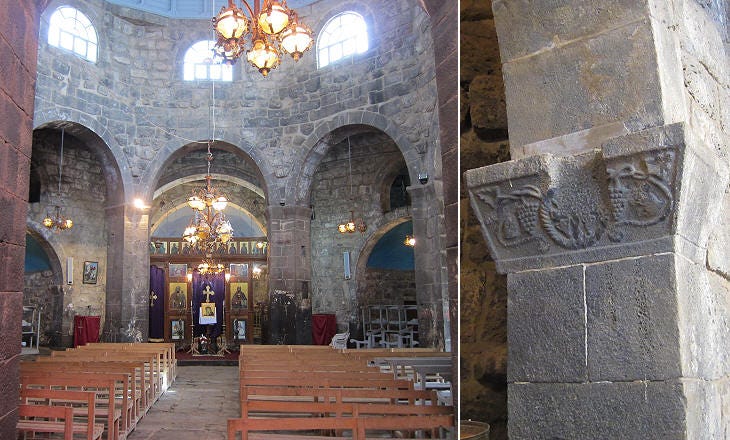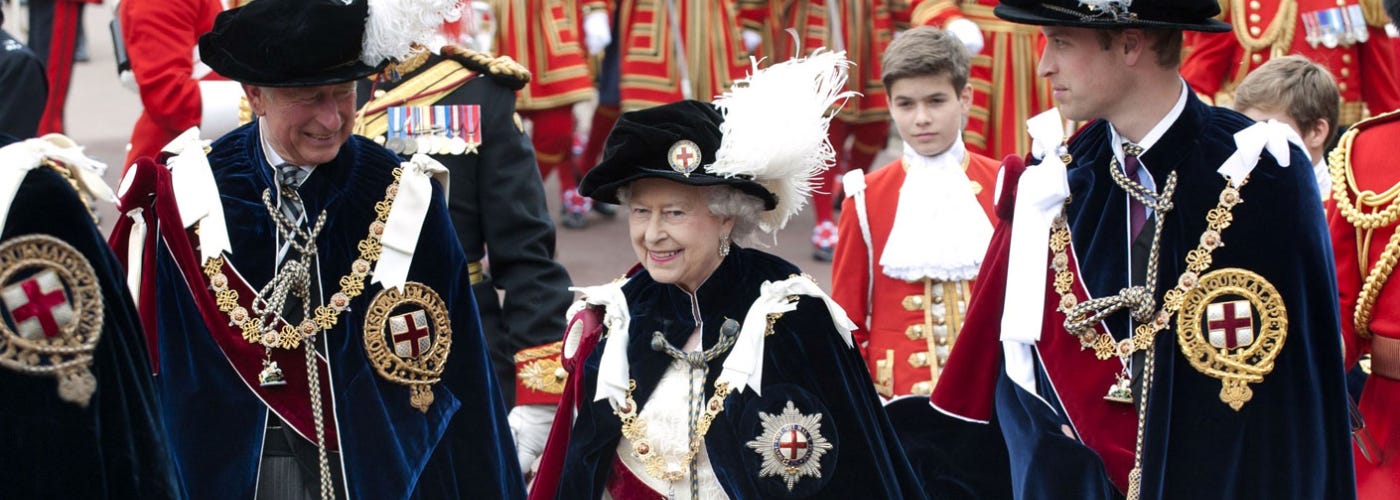We Could Use A Saint George, Martyr, And Slayer Of Dragons, Today
St George's Legend is just that, Have You Read It!?
Nota Bene: This report is partly taken from a post from my website published April 23rd, 2017, at the height of the NeoCon generated frenzy to “regime change” Bashar Assad away for allegedly “gassing his own people”; a claim that was ultimately refuted and the “gassing” pinned on MI6 and ‘Murican special ops.
“St. George is usually represented as killing a Dragon ; and where the representation is complete, there is also given the figure of a Princess, whom the Saint thus saves from being devoured by the monster. This favourite subject of both sacred and profane Art is purely symbolical, and is of Byzantine origin. It signifies the victory won over the devil, by the Martyr's courageous profession of faith; the Princess represents Alexandra, who was converted by witnessing the Saint's heroic patience under his sufferings. Neither the "Acts" of St. George nor the Hymns of the Greek Liturgy, allude to the Martyr's having slain a Dragon and rescued a Princess. It was not till after the 14th century, that this fable was known in the West; and it arose from the putting a material interpretation on the emblems wherewith the Greeks honoured St. George, and which were introduced among us by the Crusaders.” - Dom Prosper Gueranger
Blessed Second Sunday After Easter. Today is also Saint George’s Day, 23 April, and was ordered to be kept as a lesser holiday as early as 1222. During the seventeenth and eighteenth centuries St. George's Day remained a holiday of obligation for English Catholics. Saint George is the subject of many legends involving his slaying of a dragon after making the sign of the cross and converting the entire village that the dragon had tormented.
According to tradition, he was martyred around 300, and numerous sixth-century inscriptions that mention St. George still exist, including one at a monastery at Ezra in Syria from 515, another at a church in Horvath Hesheq in northern Israel dated to 519, and one more at a church in Shakka in Syria from 535. St. George's in Ezra is thought to be the oldest building in Syria which has been continuously a site of Christian worship. Saint George is the patron saint of England.
Dom Prosper Gueranger tells us of the Glorious St George.
The Roman Liturgy gives no Lessons on the life of St. George; but, in their stead, reads to us a passage from St. Cyprian, on the sufferings of the Martyrs. This derogation from the general rule dates from the 5th century. At a celebrated Council held in Rome, in the year 496, Pope St. Gelasius drew up, for the guidance of the Faithful, a list of books, which might or might not be read without danger. Among the number of those that were to be avoided, he mentioned the " Acts of St. George, as having been compiled by one, who besides being an ignorant man, was also a heretic. In the East, however, there were other "Acts" of the holy Martyr, totally different from those current in Rome; but they were not known in that City. The cultus of St. George lost nothing, in the Holy City, by this absence of a true Legend. From a very early period, a church was built in his honour; it was one of those that were selected as Stations, and gave a Title to a Cardinal; it exists to this day, and it is called Saint George in Velabro (the Veil of Gold).
To all those cheering The West's attempts to "regime change" Bashar Assad away by lobbing Cruise missiles at him; funding Al Queda & ISIS and aiding those inside Syria- Mohammedans - trying to bring Assad down, note the location of the 3 church's that house St. George's relics and in the enclosed photos that they remaining standing, intact and active. ISIS or a Muslim regime will do to these what they did to similar structures that USED to be in Iraq, until Saddam was "regime changed".
But, hey, USA! USA!
Let us compare this form of fake nationalism to the utter devotion the Italians and the English gave to Saint George. A devotion so great that under his standard many battles were fought and won!
The Republic of Genoa chose him for its Patron ; and Venice honoured him as its special Protector, after St. Mark. But nowhere was St. George so enthusiastically loved as in England. Not only was it decreed in a Council held at Oxford, in the year 1222, that the Feast of the Great Martyr should be observed as one of Obligation; not only was devotion to the valiant Soldier of Christ encouraged, throughout Great Britain, by the first Norman Kings; — but there are documents anterior to the invasion of William the Conqueror, which prove that St. George was invoked as the special Patron of England even so far back as the 9th century. Edward III did but express the sentiment of the country when he put the Order of the Garter, which he instituted in 1330, under the patronage of the Warrior Saint. In Germany, King Frederic III. founded the Order of St. George in the year 1468.
The Order of The Garter is in fact, the oldest Chivalry Order remaining in England and is yearly celebrated with a procession led by the Royal family! From their official site we learn…
Today, the Order includes The King, who is Sovereign of the Garter, several senior Members of the Royal Family, and twenty-four knights chosen in recognition of their work. Knights of the Garter are chosen personally by the Sovereign to honour those who have held public office, who have contributed in a particular way to national life or who have served the Sovereign personally. These have included Marshal of the RAF, Lord Stirrup, and former Prime Ministers Sir John Major and Sir Winston Churchill.
The patron saint of the Order is St George (patron saint of soldiers and also of England) and if there are vacancies in the Order, appointments are announced on St George's Day (23 April). The spiritual home of the Order is St George's Chapel, Windsor. Every knight is required to display a banner of his arms in the Chapel, together with a helmet, crest and sword and an enamelled stallplate.
Here in the United States, St George is still honored with being the titular saint of a chivalric order established for boys to replace the gone homo-woke Boy Scouts: The Troops of Saint George.
So today, in the era of men becoming neo-dragons by pretending to be women let us raise a glass, say a Memorare - per St Bernard the patron saint of chivalry and the Knights Templar - and honor the Legend of Saint George!








